South Omaha Livestock Exchange Building
Introduction
Text-to-speech Audio
Images
Front view of the South Omaha Livestock Exchange Building. Courtesy of the Library of Congress
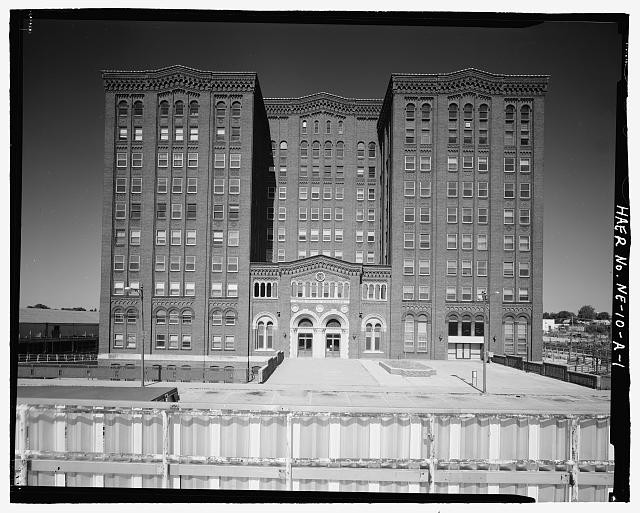
View of the backside of the South Omaha Livestock Exchange Building. Courtesy of the Library of Congress
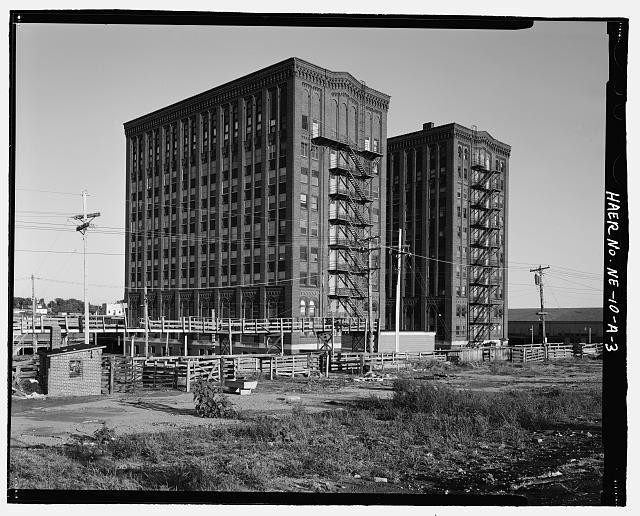
Street view of the South Omaha Livestock Exchange Building. Courtesy of the Library of Congress

View of the South Omaha Livestock Exchange Building towering over the stockyards. Courtesy of the Library of Congress
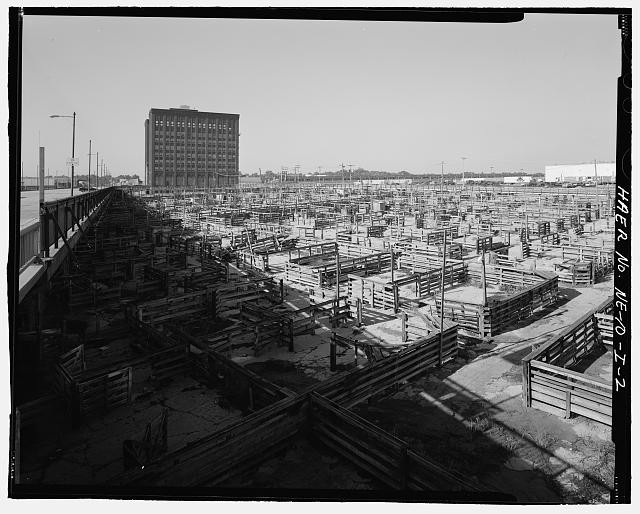
Interior view of an empty bar in the South Omaha Livestock Exchange Building. Courtesy of the Library of Congress
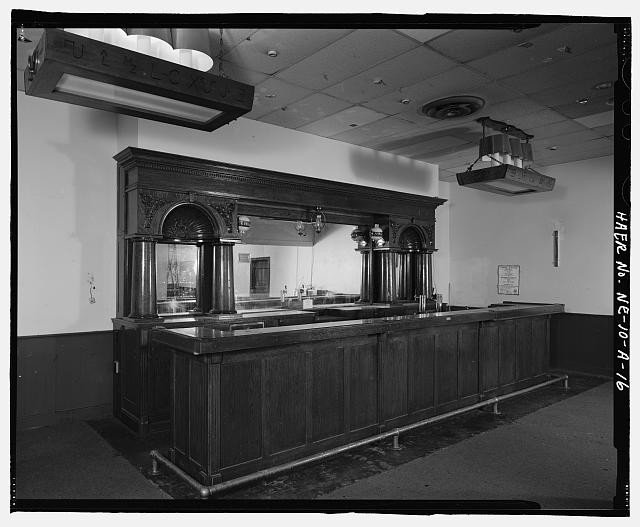
Interior view of an empty room in the South Omaha Livestock Exchange Building. Courtesy of the Library of Congress
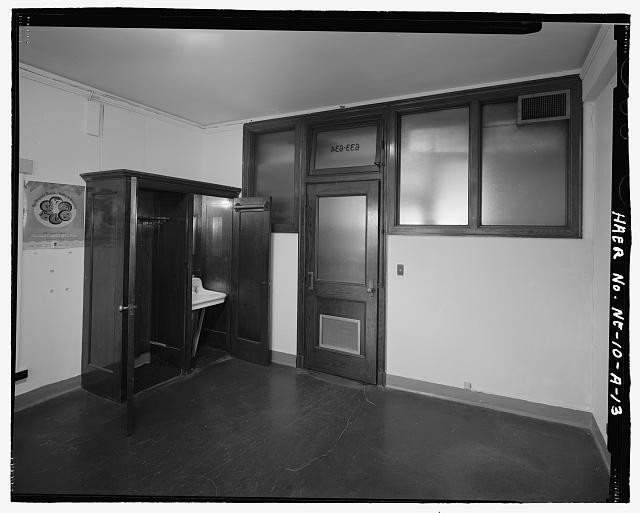
Backstory and Context
Text-to-speech Audio
Although this building looks like just another old tower in Omaha, its significance is like no other. This building symbolizes South Omaha as the “Magic City” and saw the peak of the livestock exchange business. This building helped to advance South Omaha’s prosperity and make it one of the top places in the country to have a livestock market.
In South Omaha the Union Stockyards was founded in 1883 and in the years to come, a growing number of the jobs available in South Omaha were obviously related to the livestock business. This meant that people were working in the stockyards with thousands of pens filled with animals, in meatpacking houses where fresh meat would be packed and sent off on the trains, and in management and service positions to cater to the large crowds of people who came to the stockyards.1
In 1900 the stockyards saw about 830,000 cattle, 2.2 million hogs, and 1.3 million sheep. By 1910 an average of 1.2 million cattle, 1.9 million hogs, and 3 million sheep passed through the South Omaha stockyards. In a very short time, South Omaha exploded into a thriving city, which is why it earned the nickname “The Magic City.”2
The stockyards continued to grow rapidly and it quickly became one of the best stockyards in the country and had an aggressive rivalry with the Chicago stockyards. So it was quickly decided that a livestock trade building was needed to conduct business and keep the South Omaha industry running as smoothly as possible in order to compete.3
May of 1926 the Livestock Exchange Building was completed and was used as center for South Omaha’s livestock industry. The building housed offices for about 250 members that handled almost all of the transactions for the stockyards. The building also had many other services located in it. The building had dining services along with a soda fountain so that people had something to eat and drink while they visited. A cigar stand was also available for people to buy tobacco products and there were even a few clothing stores. A convention hall for marketing and entertainment purposes was present and a bank was also located in the building for the use of travelers. The building also had hotel-like rooms for weary travelers to use after a long journey. The building was used for various services to make traveling to the stockyards with livestock a little easier on farmers and ranchers. This building helped to make the South Omaha stockyards second only to Chicago in 1947.4
The South Omaha stockyards hit its peak in the 1950s and later because of changes in marketing methods, a need for centralized operations such as this started to decline. It was easier to store refrigerated and frozen meat and therefore the need to quickly transport fresh meat declined and meat started to be transported with trucks using the interstate highway instead of trains.5 By the late 1960s and early 1970s, major packinghouses closed throughout the country and the era of the great South Omaha stockyards had ended. The stockyards shrunk and eventually closed down in 1999.6
In 2005, the building was renovated and restored. In 2017, houses apartment units and a convention center with ballrooms for events such as weddings and high school proms. The stockyards is now gone, and the Livestock Exchange Building remains standing and is classified as an Omaha Landmark in the National Register of Historic Places.
Sources
1. Emmett C. Hoctor, “Tom Hoctor and the Magic City: The South Omaha Annexation Fight 1890-1915,” Nebraska History, 1983, 256-292.
2. Barbara J. Cottrell, Harl A Dalstrom, Kay Calame Dalstrom, and Lawrence H. Larsen, “Upstream Metropolis: An Urban Biography of Omaha and Council Bluffs” (Lincoln: University of Nebraska Press, 2007), 185.
3. J’Nell L. Pate, “America’s Historic Stockyards: Livestock Hotels”, (Fort Worth, Texas), TCU Press, 2005.
4. Susan F. Henssonow, Lambert M. Surhone, Mariam T. Tennoe, “Union Stockyards”, Betascript Publishing, 2011.
5. National Register of Historic Places Registration Form, United States Department of the Interior National Park Service, May 24, 1999.
6. Barbara J. Cottrell, Harl A Dalstrom, Kay Calame Dalstrom, and Lawrence H. Larsen, “Upstream Metropolis: An Urban Biography of Omaha and Council Bluffs” (Lincoln: University of Nebraska Press, 2007), 314.
